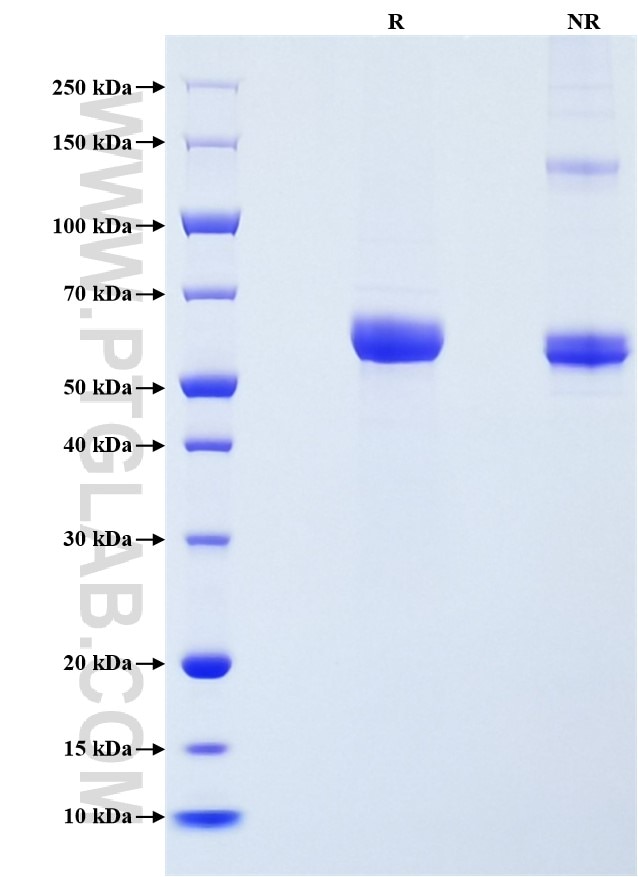Recombinant Human MMP-1 protein (His Tag)
Species
Human
Purity
>90 %, SDS-PAGE
Tag
His Tag
Activity
not tested
Cat no : Eg0527
Validation Data Gallery
Product Information
| Purity | >90 %, SDS-PAGE |
| Endotoxin | <0.1 EU/μg protein, LAL method |
| Activity |
Not tested |
| Expression | HEK293-derived Human MMP-1 protein Phe20-Asn469 (Accession# P03956) with a His tag at the C-terminus. |
| GeneID | 4312 |
| Accession | P03956 |
| PredictedSize | 55.9 kDa |
| SDS-PAGE | 55-65 kDa, reducing (R) conditions |
| Formulation | Lyophilized from 0.22 μm filtered solution in PBS, pH 7.4. Normally 5% trehalose and 5% mannitol are added as protectants before lyophilization. |
| Reconstitution | Briefly centrifuge the tube before opening. Reconstitute at 0.1-0.5 mg/mL in sterile water. |
| Storage Conditions |
It is recommended that the protein be aliquoted for optimal storage. Avoid repeated freeze-thaw cycles.
|
| Shipping | The product is shipped at ambient temperature. Upon receipt, store it immediately at the recommended temperature. |
Background
Matrix metalloproteinase 1 (MMP1), which is also known as interstitial collagenase and fibroblast collagenase is a member of the matrix metalloproteinases (MMPs) family . Proteins in this family mainly participate in the breakdown of extracellular matrix both in normal physiological processes and disease processes. Several factors contribute to the expression of MMP1, including endogenous factors, such as polymorphisms and epigenetic regulation in the promoter region of MMP1, as well as exogenous factors, such as the tumor microenvironment. A variety of MMP1 promoter genotypic polymorphisms have been reported in various ethnic populations, and their contributions to different disease risks have been explored. In the tumor microenvironment, a variety of inflammatory factors, including interleukin-8 (IL-8), IL-1β and tumor necrosis factor-α (TNF-α), have been reported to induce MMP1 expression in cancer cells.
References:
1. Shen CJ. et al. (2017) PLoS One. 12(3):e0174487. 2. Chen Y. et al. (2019) Int J Oncol. 55(1):142-156. 3. Young-Min SA. et al. (2001) Ann Rheum Dis. 60(9):846-51. 4. Murawaki Y. et al. (1999) J Gastroenterol Hepatol. 14(2):138-45.

